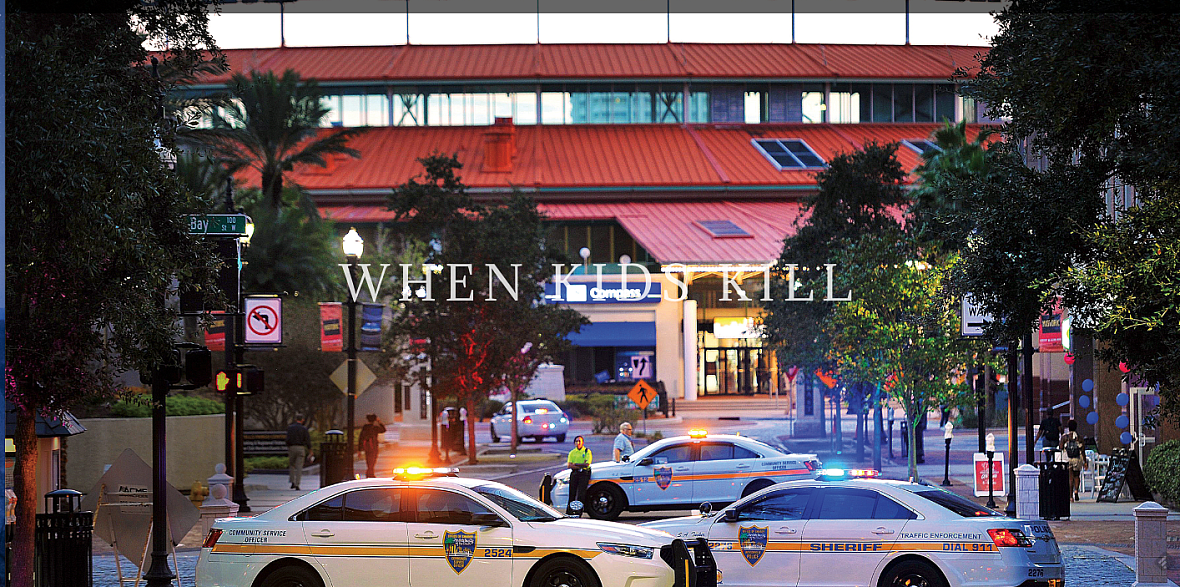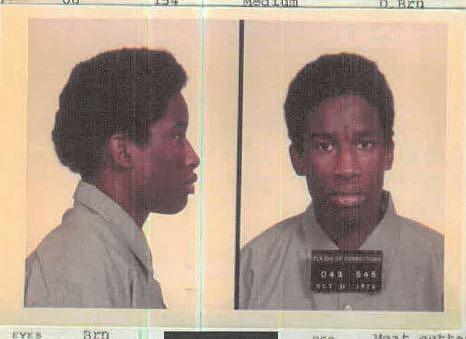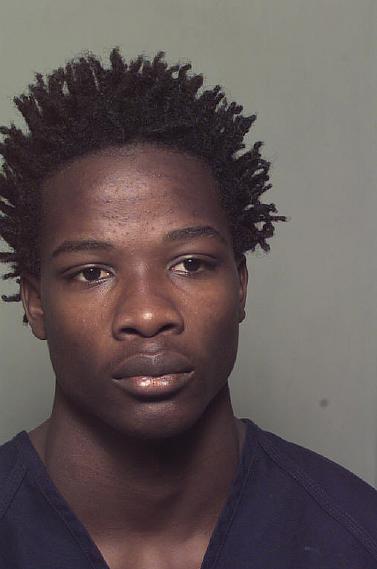In children, trauma too often leads to tragedy
This article and others forthcoming on this topic are being produced as part of a project for the University of Southern California Center for Health Journalism’s National Fellowship, in conjunction with the USC Annenberg School for Communication and Journalism.
Other stories in this series include:
Where Do Kids Get Guns? Inmates Reveal How Easy It Is
Fernandez case highlights the long-term implications of incarcerating youthful offenders
Arrest of 12-year-old on manslaughter charges highlights challenges in cases of kids
For many young homicide offenders, trouble easy to find
Many violent young offenders were 'born into dysfunction'

The children who end up buried the deepest in the criminal justice system — those serving decades-long sentences for killing another person — were often victims of extensive trauma before they played a part in victimizing others. ■ The Times-Union surveyed 25 inmates convicted as juveniles in someone's death. Of those, 10 said they'd witnessed domestic violence, 15 had been robbed by threat, force or weapon and 21 — that's 84 percent — had been shot at. ■ Seventeen said they felt safe at school, and just 10 said they felt safe in their neighborhoods.
Developmental psychology and brain science is clear: Teenagers are impulsive, irrational and don’t think things through to their logical conclusions. Now add to the mix a childhood full of one traumatic event after another.
Trauma alone doesn’t cause a teenager to kill, but it is a commonality for most of the teenagers who have killed.
“It is not going to be one thing. It’s going to be two, three and four and five and six and seven things all at once,” said Daniel Mears, a criminology professor at Florida State University.
People who have committed multiple crimes, let alone serious crimes, “really are in a different universe” when it comes to their lived experiences, Mears said.
In an effort to better understand the early lives of Duval County teens who went on to play a part in ending another person’s life, the Times-Union has conducted over the last 20 months an extensive examination of juvenile homicide. A major component of the reporting: listening to the people convicted in these crimes.
The newspaper wrote letters to 103 of these current prison inmates from Duval County. Fifty-seven wrote back. Of those, 25 answered an extensive survey about their lives developed by the newspaper in consultation with experts in mental health and criminal justice.
Studies have shown as many as 90 percent of young people involved in the justice system have experienced some type of trauma, an average of 70 percent meet the criteria of a mental health disorder and approximately 30 percent meet the criteria for Post-Traumatic Stress Disorder.
But for the dozens of young offenders who corresponded with the Times-Union, it goes even deeper.
Nearly all of them describe frequent, repeated trauma. And, just as frequently, they also share how they felt like no one was there to support them through those many bad times.
They lived in homes with separated parents, and with adults who abused alcohol and drugs. They experienced periods of homelessness or couch surfing, and saw violence in their families, communities and schools.
One isn't a “bleeding heart,” Mears said, to point out the extreme backgrounds these kids have. What it does, he said, is identifies some commonalities and characterizes the level of need among these young people. That's how those factors can then be addressed.
“Nothing about that means you don’t punish people who commit murder,” Mears said. “You’re providing a richer description about the extent that these factors contributed, and if you want to address that, you look at these things.”
'It changes your brain'
Trauma is more than experiencing something scary. Trauma is the deeply distressing, emotional response to a profoundly negative event.
Some types of trauma — like having divorced parents or a serious illness — are relatively common.
Trauma experienced by children doesn’t guarantee poor outcomes later in life, but the cumulative effect of multiple traumas does make bad outcomes more likely.
“Trauma isn’t just, you had a tough life so you become bad later,” said Dr. Mikah Owen, a pediatrician who works with justice-involved and foster care youth in Jacksonville. “It changes your brain architecture. It changes the way you express your stress.”
Owen explained it like this: Two people see an unchained, scary dog. Their stomachs drop, their heart rates go up and they become vigilant. For the person without a history of trauma, everything goes back to normal when the owner claims their dog and puts it in the car.
“But for kids who have grown up in a traumatic experience, it’s like the pitbull is always there and they’re always wondering if it’s going to jump at them,” Owen said. They can't attack the dog, because that's dangerous, he said. And a child can't just leave because they need to be with an adult, or they could get lost.
“So their body never learns how to turn those things off.”
And, Owen points out, these events are taking place in the already developing adolescent brain.
The circumstances that these kids are subjected to are ones they can’t change: They can’t change who their parents are. They can’t solve their family problems. They can’t move to safer neighborhoods.
“What I wish the most is that I didn’t (have) to grow up in the project environment that I was forced to grow up in,” said inmate Tony Brown, 61. Brown was 16 when he took part in a murder of a Springfield pharmacy clerk that earned him a 15-year sentence. He's back in prison on other charges now. “The life there was too far and the kids there knew too much more than what a kid needed to know at 7 or 8 years old.”
TONY BROWN | “What I wish the most is that I didn’t (have) to grow up in the project environment that I was forced to grow up in. The life there was too far and the kids there knew too much more than what a kid needed to know at 7 or 8 years old.”
Repeated trauma: ‘no safe haven’
Carly Dierkhising, an assistant professor in the School of Criminal Justice and Criminalistics at California State University, Los Angeles, said trauma snowballs. A person who hasn’t experienced trauma may see the risk in certain situations and avoid them, whereas someone who has been hurt in the past may not.
“Trauma is a risk factor for trauma because your learning and understanding of safety is different,” she said. “You really see that in the lives of juvenile justice youth. They’re experiencing a lot of types of trauma, and they’re experiencing it over time.”
Enduring multiple, repeated bad experiences is called polyvictimization, Dierkhising said. They can come from any part of a kid’s life, including their family, community, peers and school.
The cumulative effects of these experiences are shown to have a greater impact on mental health than a single incident of trauma, Dierkhising said.
“There is really no safe haven for them,” she said. “There is nowhere in their lives they feel safe.”
“Jacksonville is one of the roughest cities in the South. I had to fight all my life in this city,” wrote inmate Julian Foster, who was sentenced in a friend's death after the man they tried to rob shot and killed the friend. “At home, the park, school, going to the corner store, church. I had to be tough.”
'I learned survival'
One of the effects of trauma is that it desensitizes. Trauma stops feeling like trauma and starts feeling routine.
Few of the young inmates who wrote with the Times-Union used the word “trauma.” Instead, they described violence in their homes, extreme poverty, substance abuse and gun violence in matter-of-fact terms.
“Drugs, killings, robbery. That’s an everyday occurrence in the environment that I growed up in,” wrote DeWayne Ward. Eighteen-year-old Timotheus Stamper, a U.S. Marine, was killed when gunshots were fired into his convertible at a gas station in 2002. Ward, then 17, and two other teenaged friends were sentenced for Stamper's death. “Silver spoon? I never had one.
“But I learned survival.”
Dierkhising said she has seen this among the gang-involved youth she works with. The teens might say nothing bad had happened recently, but their case worker knows for a fact that they’d been shot at a few days earlier.
That’s the result of two things, she said. First, they don’t see it as a scary event because it happens so frequently. Second, they don’t want to admit that they were scared.
Interpreting violence as normal is a coping mechanism, she said. If they had to process and feel all the bad things they saw, it would be overwhelming. That appearance of disconnection and indifference is part of what gave rise to the now-debunked 1990s concept of the teenage “superpredator.”
“It looks like callousness,” Dierkhising said. “People looked at this and they were like, ‘Oh my God. These youths are animals. They have no remorse and they don’t seem to care what they did.’ ”
But that's not true; she said, the numbness is a response to trauma.
DeWAYNE WARD | “Drugs, killings, robbery. That’s an everyday occurrence in the environment that I growed up in. But I learned survival."
'Crisis in mental health access'
Trauma is treatable. There are therapies and techniques that can help to reverse its effects. The problem is, the kids who need it most can rarely access those treatments.
It has long been a common lament among Jacksonville-area health-care providers and nonprofit agencies that there is a shortage locally of mental health professionals.
Not only is there a need for professionals who can meet the depth of need that children and families have, but they must also be accepting new patients, take their insurance, which is often Medicaid, not have months-long wait times and be accessible to families living in the largest city by land area in the contiguous United States. And all of that assumes that a parent or guardian knows about and wants therapy for their child.
Owen, the pediatrician, said he has seen wait times and quality of care fluctuate for his patients who need mental health care. Sometimes, it can take as long as three months to get a patient into a psychiatrist, he said. There is a “crisis in mental health access,” he said.
“Since I work mostly with patients on Medicaid, I'm often referring patients to safety-net providers,” Owen said. “In my opinion, there is pretty high turnover in term of mental health providers. As they get more experience they tend to leave, and new ones, with less experience, take their place.”
All of Duval County is a designated shortage area of mental health care providers for people who are low-income, according to the Health Resources and Services Administration, an agency of the U.S. Department of Health and Human Services.
Shortage areas are designated by the agency as having too few providers to meet the needs of an area or group of people. The shortage is given a score from 1 to 26, in which the higher the score, the the greater the priority.
In Northwest Duval County — which is listed as Baldwin and north and west Jacksonville — the shortage is scored as a 19 out of 26. Southeast Duval — the beaches and east Jacksonville — is scored a 17 out of 26. Both shortage areas were designated in April 2018.
Licensure data from the state Department of Health shows that Duval County has about 1,700 counselors and therapists. That works out to roughly 182 providers for every 100,000 county residents. Pinellas, the county most similar in size to Duval, has about 211 to every 100,000 people. Miami-Dade, Broward, Palm Beach, Orange and Hillsborough also have more providers to serve their respective populations.
The state Agency for Health Care Administration says it has 962 mental health care-related providers on file in Duval County who accept Medicaid. Recent AHCA figures show there are more than 200,000 people county-wide eligible for Medicaid. When compared to other metro counties, Duval, once again, has a higher need and fewer providers.
There has been a push in recent years to increase the number of therapists who work in Duval County Public Schools. Thirty-eight therapists serve schools in the Full Service School model, and 64 more are in the process of being added. All told, there will be 102 therapists, with 40 of them embedded in one school and work closely with only that school's students.
A lack of access to providers assumes that kids are even seeing a doctor regularly. Owen said he’s spoken to patients who haven’t seen a doctor in three or four years. And for those who do see physicians, those providers are likely not trained to ask about or recognize trauma.
Kids who have experienced trauma are commonly misdiagnosed with conduct disorder, bipolar disorder or even symptoms of schizophrenia, Owen said. Their symptoms will be medicated, but their underlying causes — their traumas — don’t get treated.
“It’s appalling to be a poor kid in Florida,” said Owen, who was trained in California. “The access they have, the way they get treated.”
[This story was originally published by Florida Times-Union.]

